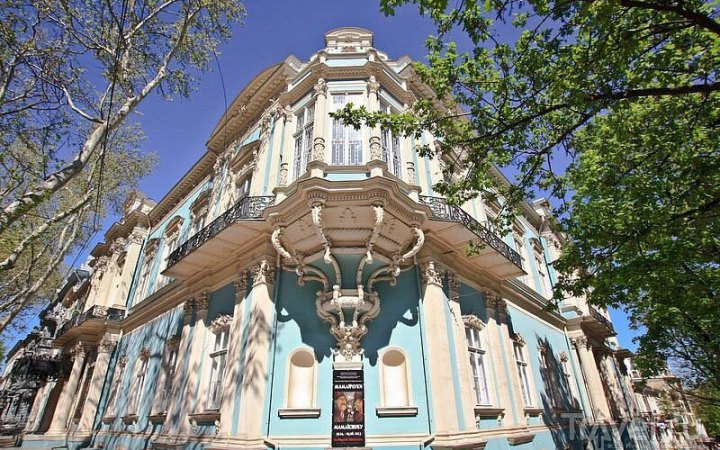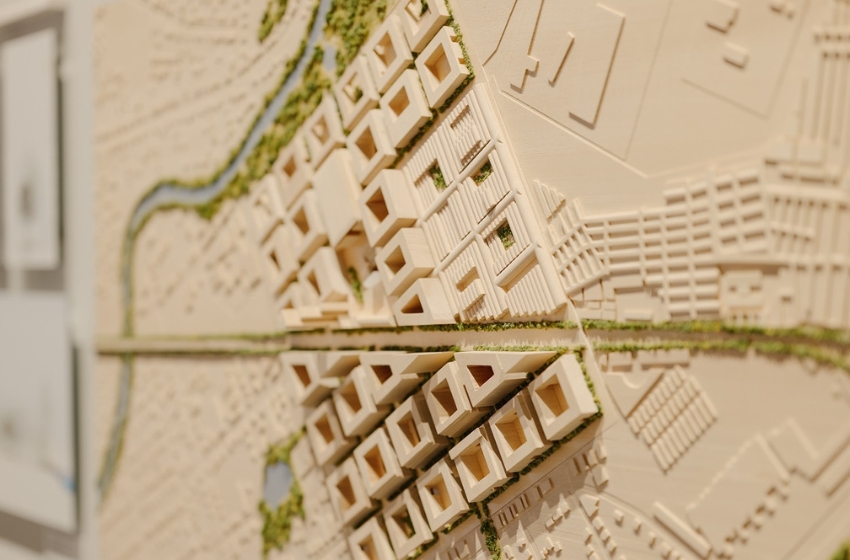There many legends behind the mascaron (bas-relief) of a young woman’s head with a rope around her neck on a pre-revolutionary bank’s building, known for this reason as the “house of the hanged womanâ€.

The sculptural image of a girl’s head with a rope around her neck decorating the house on the corner of Marazlievskaya Street and Nakhimov Lane is the largest on a building’s facade in Odessa. So far, historians have not been able to determine the reason for the appearance of this unusual decoration. There are several urban legends offering a meaning.
The simplest (and less interesting) version is that it is a reminder of a girl, who committed suicide by hanging. But the majority of researchers agree that this mascaron is somehow connected with the numerous kidnappings of Odessite young women in the middle of the 19th century, who were enslaved and sold to Turkish harems. They say that beautiful girls were lured, held captive in the “house of the hanged woman†and later transported by sea to Turkish harems. Moreover, the legend say that under the house there was even an underground tunnel that went from the building to the sea.

According to another urban legend, a band of Odessite slavers once captured a pair of beautiful twins. Knowing of their fate, the girls chose to hang themselves rather than be sold into bondage. Therefore, the head with ropes around the neck was installed on the house in memory of this event, as symbol of the victims of slave trade.
Actually, ethnographers found evidences of events in Odessa’s past, which support these tales, or at least the stories of Odessa’s historical slave trade. For example, in a back issue of the newspaper “Odessa News†of 1893, they found this passage: “Not long ago, a certain “V.F.†came to the Russian embassy in Constantinople, and claimed that she had been sold into a harem by an Odessa man named “H.M.â€, from whom she had managed to escape.â€

Another historical case looks like the plot of an adventure novel. In the 1880’s, news circulated around Odessa that the kidnapped 16-year-old Anna Prokofieva had been confined to the harem of a wealthy Turk in Thessaloniki (at that time under the Ottoman Empire). With time, he started to love the woman, who became his wife and gave him two sons. Soon afterwards, the man died. After his passing, Anna inherited four houses in Thessaloniki, six sailing schooners and 5,000 liras in cash. Anna donated one of the vessels to a monastery of Mount Athos, and gave away one of her homes to host an Orthodox school. After this, the 24-year-old widow sailed back to Odessa aboard her own ship. A kind of Roxelana’s life.
Anyway, the connection between Odessa's architecture, particularly the notorious mascaron, and these events in the city’s history remains a mystery. Maybe, this bas-relief was dedicated to lost members of a family, or the architect was merely inspired by the stories of the kidnappings of beautiful Odessa girls.

As far as the building in Marazlievskaya n.2 is concerned, the "house of the hanged woman" was built in 1903. It was designed by one of the best architects-modernists of Odessa: Moses Isakovich Linetsky, in collaboration with Samuel Savelyevich Halperson. and registrered as "Profitable House of M. D. Lutsky." The house was owned by wealthy Odessites and hosted two banks until the Red Revolution.
One significant chapter in the history of the house is now imprinted on a memorial plaque on the corner of the building’s facade: "In this house, in 1910-1911, the Russian writer Aleksandr Ivanovich Kuprin lived." In those years, Kuprin wrote some great novels, that in some way reflected life in Odessa, like: "Gambrinus", "Garnet Bracelet", "Listrigony", "Lenochka". His daughter, K. A. Kuprina in the essay "Kuprin, my father", wrote:
My father traveled almost all of Middle Russia, liked many of its cities, districts, landscapes, but a special place in his heart occupied Odessa ... At the end of August 1909 we moved to Odessa, where soon rented an apartment with a view of the sea.
Lutsky’s house is connected with another distinguished name. In the years 1925-36. In this house lived a renowned Soviet scientist in the field of hydraulics, prof. V.N. Pinega.





















